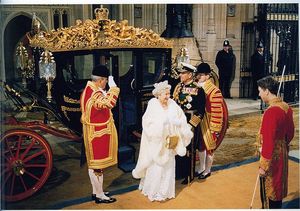Enforcing dog commands can be challenging. The responsiveness of your dog will depend on your reaction to him. If you act nervous and impatient, he will pick up on that and become less responsive to your dog commands. Enforcing commands for dogs is challenging, but by following these dog training tips, your dog will turn into Prince Charming in no time! I use these dog training tips on my own sweet St. Bernard and Newfoundland dogs.
Tips For Enforcing Commands In Dogs
1. Always use your dog’s name when enforcing dog commands. With a warm, cheerful tone in your voice use a short version of your dog’s name every time you offer him something positive like food or praise. This will start to stick when you attach it to a command. Praising your dog with “good boy, Jeff” and “what a good boy, Jeff” will carry over to “sit, Jeff” and “stay, Jeff”. He will soon begin to associate the warm, cheerful tone of your voice saying his name with all things positive. This will encourage him to obey your dog commands.
2. As you work on your “sit” dog commands, make sure you say “sit” while you position your dog into a sitting position. You can position your dog to sit by placing your right hand under his chin and using your left hand to gently put pressure on his waist under his ribs. By associating touch with your words, your dog will get the hang of obeying his dog commands.
3. When enforcing dog commands for dogs, it is important that you keep you training periods brief. Do not drone on and on for an hour or more. You dog will become bored and disinterested. You need his undivided attention in order for him to obey your dog training commands. Short, fun training periods work best for enforcing commands for your dog.
4. Never shout at your dog. When enforcing commands for dogs, it’s important to use a firm tone, but not as firm as the command will sound menacing. This will only scare and confuse him. Also, never use his name with the word “no.” Only use you dog’s name when you’re pleased with him or if you are happy, such as “I’m happy that you chased that intruder away, Jeff”, or “I’m happy that I only sustained a minor ankle sprain, when I tripped over you, Jeff.” Never say “Jeff No.” Be consistent. You dog will become confused by the use of his name when you’re happy and when you’re angry at him. Use the command “no” independent of his name when you mean no. Use his name only when you are happy or pleased with him. These are key points in dog training tips.
5. When you want your dog to obey his dog commands, take him in a quiet room so that he can focus only on you. No distractions like television or other noise. Dogs don’t have the greatest attention spans so enforcing commands for dogs garners better results when your dog is concentrating only on you.
6. Always praise your dog profusely when you are happy with him for obeying your dog commands. Kneel down to his level and pet him vigorously while saying his name. “Jeffie is such a good boy.”
7. Reward with a treat. You dog will respond to his dog training commands quickly and eagerly if your reward him with a treat. Dogs love treats and will respond promptly to your dog commands if he knows what awaits him.
8. If your dog does something that makes you happy, don’t just give him a lukewarm reaction. This will break his spirit. He will remember how uninspired you reacted to him and he won’t work as hard next time at your dog commands. He’s expecting a rousing show from you to praise his efforts. He is obeying your dog commands and you must recognize his hard earned effort with excitement and enthusiasm.
9. Continue enforcing commands for dogs even during playtime. Enforcing dog commands must be consistent and continued throughout the day, even while your dog is having fun. If you continue enforcing dog commands during times when your dog is having fun, he will learn to equate dog commands as a positive instead of a negative.
10. Have fun with your dog while enforcing dog commands and always do it with lots of love. Your dog will surely reward you with obeying dog commands as you continue to reward him with lots of love.
Sources – Puppies For Dummies by Sarah Hodgson, Professional Dog Trainor
Jeff – 160 pound Saint Bernard dog
Meadow – 130 pound Newfoundland dog




